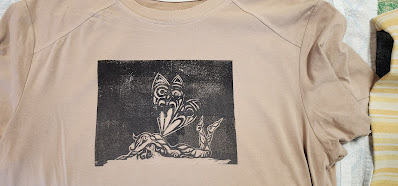| Today I’m off to my first ever tournament, not only is it my first tournament, but it’s playing Flames of War. The game system I know the least about of all the games I play. Thankfully it’s a doubles tournament and my partner in crime is a Veteran at the game. It should be a blast and I’m luging in my camera and macro lens to take lots of photos as we play. Below is Will’s army list and info for our entry. Lot’s of photo’s to come…
These form part of the Deutsch-Italienische Panzerarmee at the second battle of El Alamein on the 23rd/24th/25th October 1942 Battalion HQ 30 Combat Platoons Support Platoons TOTAL 920 Number of platoons for deployment/morale: 4 HQ 2 Panzer III J (early) 180 Combat Platoons 1 Zug 4 Panzer III J (early) 360 TOTAL 1080 Number of platoons for deployment/morale: 2 Total Combined Force Points: 2000
It was a reserve unit during the invasion of France when it attacked through the Piccolo San Bernardo Pass. Later it took part in the invasion of Yugoslavia, fighting at Mostar and Trebinje. It was sent to North Africa in the spring of 1942 were it fought until it was destroyed at El Alamein in November 1942. At the start of the 2nd battle of El Alamein, Littorio counterattacked with the 15th Panzer Division and both divisions took heavy losses. The skeleton division that remained of Littorio was pulled back and what was left was assembled into part of the Brigade Imperiali, but the Littorio division effectively ceased to exist at this point in time. 15. Panzer-Division was formed in November 1940 from 33. Infanterie-Division. It was sent to Libya Feb 1941 and took part in the fighting in North Africa. At the beginning of July the Eighth Army had reached their final defensive position before Alexandria at El Alamein. The DAK was understrength from its recent battles, but Rommel attempted an attack along Ruweisat with the 15th Panzer and the remainder of the DAK. Only minor progress was made, British counterattacks and mounting German losses caused Rommel to call off the attack on July 22. Another attack was attempted on August 30, with Rommel's armoured forces attacking the southern flank. The 15th Panzer Division reached as far as the Alam Halfa ridge on September 1, but failed to break through the British defences. At this point Rommel went on the defensive and began to build a comprehensive position with deep minefields. The 15th Panzer Division formed the reserve in the northern part of the front. As with Littorio, 15th Panzer formed part of the initial Axis counterattacks at the start of the battle of El Alamein, but these failed to halt the advance; by November 4 British tanks had achieved a breakout. Now began a period of steady British advance to the west, combined with the Allied landings as part of Operation Torch on September 8. The remains of the 15th Panzer Division and the remainder of the Axis forces, were continually forced to withdraw. XXX Corps reached and out-flanked the line at El Agheila on December 17, then took Tripoli on January 23, 1943. By February 18 XXX Corps reached the defensive line at Mareth in Tunisia and were forced to halt. The 21st Panzer Division was drawn away to the Kasserine Pass operation on February 22, so 15th Panzer held the Mareth Line with the remaining Italian forces. It surrendered in Tunisia 13 May 1943 with the rest of the Axis forces in Africa. Links used: Books used: |
The important things in life ....
Painting and playing War Games, Photography and drinking Scotch
21 May 2011
2011 Battlefront Mid War Doubles G.T.
Subscribe to:
Post Comments (Atom)
Fabic printing
After some hit and missing printing onto the t-shirts I did some more research and ended up getting myself some Essdee fabric inks along w...

-
After some hit and missing printing onto the t-shirts I did some more research and ended up getting myself some Essdee fabric inks along w...
-
Gaming this year is down on previous years for sure, with the new house, COVID and all. But I have now completed my second army for the yea...





No comments:
Post a Comment